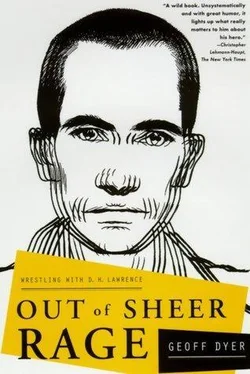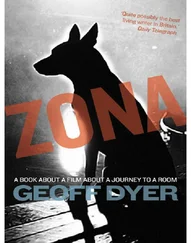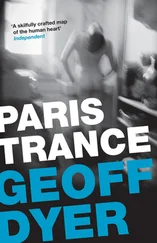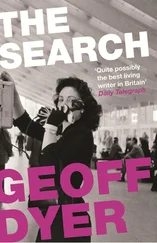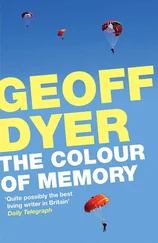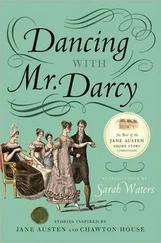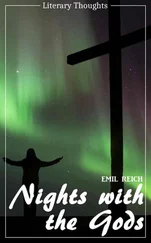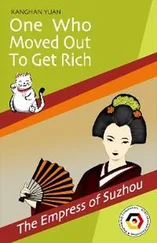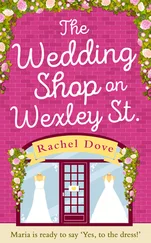She loves to do jigsaws. We did them when I was a child and she still makes them now, on the same sheet of hardboard that my father cut for us thirty years ago. We sorted out the side pieces and made a hollow, unstable frame, then filled in the middle. (For years my father worked in a factory; even at home, in matters of carpentry, he was a conscientious craftsman. My mother too was diligent and careful in everything she did. Perhaps it was inevitable, then, that we should approach our jigsaws in a methodical not to say semi-industrial spirit. Work had entered into every facet of my parents’ lives; even their leisure had some of the qualities of labour.) We allowed ourselves to consult the image on the box: quaysides usually, or lakes reflecting (confusingly) blue skies, the yellow leaves of surrounding trees. I liked action scenes from popular TV series like Ripcord (parachutists in freefall: hundreds of pieces of uniform sky) but my mother preferred images from nature which, with the exception of those taken in spring, summer or winter, were overwhelmingly autumnal in mood. Other people make jigsaws in different ways, imposing different rules (no looking at the box), granting themselves other freedoms (start where you like), but we always started with the edge. One, which we made several times, was an illustrated map of the British Isles with a curving blue edge of sea. For once we reversed our usual method: we started in the middle and worked our way outwards to the coast, to the sea. I remember it clearly, that jig-map, but I cannot see it as clearly as I remember it. Many famous places were illustrated but I can picture only the three we started out from: a Highland piper, Jodrell Bank, Stonehenge. (There was no plan to frame this book, to hold it in shape. I started in the middle with one or two images and am working my way outwards, towards an edge that is still to be made.) My mother still does jigsaws and she also loves to do crosswords, whole magazines of them. She is probably doing one now, just as she was doing one when I returned home from Eastwood that day, sitting by the fire in her red sweater, blue slacks and glasses. I sat with her for a while and she asked me for help with some clues. I grunted answers, usually ‘I don’t know.’ To help her — the equivalent of using the image on the jigsaw box — she had an old reference book called Words on her lap. She sat by the fire, consulting Words , while my father, who has never seen the point of doing jigsaws or of reading, watched telly, the volume turned high because he is slightly deaf. Upstairs were all my books, a few on shelves, most in boxes, waiting for a permanent address.
The bells in Piazza Santa Maria in Trastevere tolled quarter to one — the longest sequence of bells: twelve long, three short. At the White Peacock Café a clock struck midday. I left and walked over to the Lawrence Museum. There was very little Lawrentiana in the gift shop window: teddy bears, mainly, and Christmas gifts. The house at 8a Victoria Street had been restored and refurbished to reflect ‘the lifestyle of the working-class of Victorian times, and the early childhood of Lawrence himself’.
The parlour was oppressive, dark, a far cry from the light, Scandinavian interiors of Ikea. On one wall a framed square of tapestry made ‘Home Sweet Home’ seem like a curse. The room was dominated by the fireplace and fireguard which were painted black, coal-colour. Everything about the interior suggested that homes aspired to the appearance of mines — which in a sense they did. Instead of the earth weighing down on the galleries there was the great weight of dark sky pressing down. The town was a narrow seam burrowed out between earth and sky. Even the vernacular of this architecture is oppressive: skullery, parlour, hob. . Heavy words: dark, sooty. The closed-in feeling of houses like this has nothing to do with cosiness. Everything has to be kept at bay (hence, perhaps, bay windows ): dirt, weather, debts, the outside. This spirit lives on into the present day. Leaving the Lawrence Museum to follow the Blue Line Trail around Eastwood, the visitor will find the gates of many houses sporting signs like ‘Beware of the Dog: Enter at Your Own Risk’ or ‘No Hawkers, No Salesmen, No Religious People’. Beyond these warnings, for the benefit of anyone familiar enough to ignore them, there is usually a mat saying ‘Welcome’.
Upstairs from the parlour was a bedroom which looked like someone had died in it a century ago or the day before yesterday, whichever was the longer. Off-white, death-coloured night-dresses were spread on the bed which looked like it was designed to die in; either for dying in or giving birth in, ideally both at the same time. In a room like this rest seems a species of grief. Museum installations always have a touch of death about them. Houses have to live; they cannot be embalmed. This one died a natural death and then, after it had fallen into disuse, after it had decomposed, they tried to bring it back to life again but succeeded only in embalming it in death.
I moved quickly upstairs, experiencing that familiar urge to hurry through the part of the visit that should have detained me, the part that drew me to the place in the first instance. In another upstairs room, the ceiling was bedecked with bright plastic leaves to indicate — presumably — proximity to Sherwood Forest. In the centre of the floor, inscribed with the initials D.H.L., the author’s travelling trunk occupied pride of place. The travelling trunk had become a piece of site-specific sculpture. You walked around it. The one thing you would not want to do with a trunk like this is travel with it. Luggage was something that interested me, a theme I’d contemplated exploring in my study: its evolution and development, the matrix of requirements, function and limitations (of weight and size) that go to make up a particular item. It wasn’t a problem for Lawrence; back then there were legions of porters to lug around your trunks, no matter how unwieldy.
In the room next door a video gave an account of Lawrence and Eastwood. It opened with that northern brass band music which sounds like it marched to its own funeral more than a century ago, music whose every note is a lamentation for its having become extinct. Except extinction no longer means ‘no longer in existence’. Plenty of extinct things are still around. Brass bands, for example: they’re still going strong even though they are extinct; even though they’re extinct they’re still going strong. The video stressed that Eastwood and its environs was the ‘country of Lawrence’s heart’. He attended the Beauvale Board School, but, the commentary conceded, ‘by all accounts hated’ it, just as he hated the ‘sordid and hideous’ squares of purpose-built miners’ dwellings. It was odd sitting there, watching this video about the man who seemed to hate so many things about the town that was now seeking not simply to honour him but to reclaim him as a local author.
Tired of looking through my notes, I walked across the Tiber to the Piazza Farnese. Some boys were playing football exactly as if they were playing for Inter or Roma: fouling, time-wasting, diving, appealing to the crowd at the beautiful injustice of the game.
It was a relief to be outside, to leave the Lawrence Birthplace and Museum, to step out of the dismal interior and into the different dismalness of the outside. A gang of lads were hoofing a football down the street. I followed the Blue Line Trail, a blue line painted on the pavement, linking ‘the Birthplace with the three other houses [Lawrence] lived in and eight other Lawrence-related sites’ (not counting the Lawrence Snackery, Lawrencetown Car Sales or the Lawrence Veterinary Surgery). Several places were not on the itinerary, like the Beauvale School and the British School where Lawrence taught for a while. ‘Both buildings,’ the video explained, ‘were demolished in 1971 to make way for a new supermarket.’ There you have it: attempts at conservation take place in the midst of the ongoing culture of ruination that is contemporary England. This is the heritage effect in a nutshell: protecting the odd pocket of wilderness or preserving the occasional building of historical interest, is actually a license to trash everywhere else. Not that Eastwood is worth preserving. The Blue Line Trail is a nice idea but there is no getting away from the fact that Eastwood is an ugly little town in an ugly little county. The countryside around Nottingham seemed beautiful to Lawrence, the mines an aberration, ‘an accident in the landscape’. Yet the real crime of nineteenth-century industrialism seemed to him ‘the condemning of the workers to ugliness, ugliness, ugliness: meanness and formless and ugly surroundings, ugly ideals, ugly religion, ugly hopes, ugly love, ugly clothes, ugly furniture, ugly houses, ugly relationships between workers and employers’. These days we scarcely even notice ugliness. We notice its absence. In the face of this pervasive ugliness the workers, according to Lawrence, hungered for beauty. What was the piano, often found in colliers’ homes, ‘but a blind reaching out for beauty’?
Читать дальше
